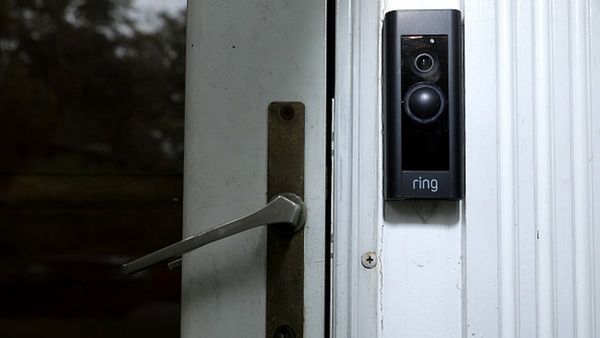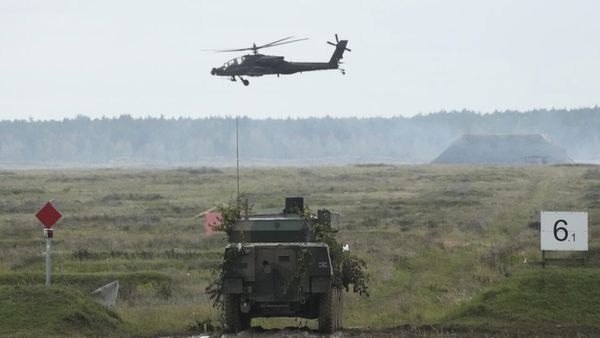
The man known as Donatien Nibasumba, supposedly a Burundian refugee, was at his work as a security guard at a farm in the wine country outside Cape Town on Wednesday evening when he found himself surrounded by police in body armour carrying rifles.

Two foreigners who had arrived with the police, members of an international tracking team pursuing war criminals, walked up to him and started reading him his rights, but they did not refer to the man as Nibasumba.
They called him Fulgence Kayishema, the name of one of the world’s most-wanted fugitives, a former Rwandan police officer indicted for his part in one of the worst single crimes of that country’s 100-day genocide: the slaughter of more than 2,000 Tutsi cowering from their Hutu attackers in a church when it was set on fire and then brought down on their heads with a bulldozer in April 1994.
The man looked devastated, and denied being Kayishema. He was a trusted and well-liked employee in the mostly Afrikaner farming community in Paarl, where he had saved a local woman from an attack. Confronted by Kevin Hughes and Ewan Brown, the American and British leaders of the fugitive tracking team, the man even denied being able to speak English.
When Hughes and Brown pointed out they could easily fetch someone from the farm to prove he spoke English perfectly well, he relented but continued to insist: “I am not Fulgence Kayeshima. God will be my judge.”
It was only later that evening, in a Cape Town police station, that the man brought to an end 29 years of living under a succession of aliases and admitted his identity. “I have been waiting a long time to be arrested,” he told the police. He had just not seen it coming on that particular South African autumn evening.
“I think obviously it came as a shock that it happened that day at that time and that place,” said one senior official involved in the arrest. “He had no idea that this was coming and that we had moved so quickly. He was just flabbergasted to be in this situation, at his place of work, having the South African police intervention unit in their balaclavas and body armour, and long rifles.”
The arrest came 29 years after the Rwandan genocide, in which over half a million people were killed, almost all Tutsis with some Hutus who refused to go along with the slaughter. It is 22 years since Kayishema was first indicted by the International Criminal Tribunal for Rwanda (ICTR) for his role in the Nyange church massacre.
He was the police chief for the Kivumu commune and was part of a committee of local Hutu leaders there, including the Catholic parish priest, who planned and supervised the complete obliteration of Kivumu’s Tutsis.
When the killing started, some Tutsis rushed to the church, hoping it would provide haven, not knowing that the priest, Athanase Seromba, was overseeing the slaughter. Kayishema’s men helped round up thousands of other Tutsis and took them to the church compound. Then the Interahamwe Hutu militia arrived, and the killing started.
At first the militiamen and the police hacked at their victims and tossed grenades among them. The survivors retreated inside the church and barricaded themselves in, beginning a three-day siege. Kayishema himself is alleged to have fetched fuel to set the church alight. When that failed to finish the job, a bulldozer was summoned to tear at the walls until the roof came down on the trapped victims inside.
“The few survivors were attacked by the Interahamwe, anxious to finish them off,” the indictment said.
When the Hutu regime fell, Kayishema and his family fled, disappearing among the mass of Hutus fleeing the Tutsi-led Rwandan Patriotic Front. They crossed into the Democratic Republic of Congo and then Tanzania, where they registered under false identities as Burundian refugees, before moving on to Mozambique, Eswatini (then Swaziland) and finally South Africa in 1999, changing identities along the way. Kayishema was supported and kept hidden by a network of family members and other Rwandan genocidaires, according to the prosecutor’s office.
Kayishema was eventually granted asylum in South Africa as Donatien Nibasumba, claiming to be the victim of the same kind of lethal persecution he had meted out to Rwandan Tutsis. Meanwhile, his trail went cold, and he was able to outlast the ICTR, which closed down in 2015.
However, a residual mechanism was set up in The Hague and Arusha, Tanzania, to oversee outstanding cases from the ICTR and its sister court dealing with war crimes from former Yugoslavia. Serge Brammertz, the last prosecutor of the Yugoslav court, was made chief prosecutor for the mechanism, overseeing Rwandan cases too, and he brought with him the lessons learned from the pursuit of Balkan war criminals like Radovan Karadžić and Ratko Mladić.
Hughes, Brown and the rest of the tracking team Brammertz assembled went in search of the last Rwandan fugitives, each time rebooting the investigation looking for clues that had been missed the first time.
“It was starting from complete scratch, having no assumptions, doing everything all over again, from the very first moment that Kayishema committed the crimes in April 1994,” a team member said. “We even went further back to the moment he was born and worked our way forward by identifying everything we could find out about him.”
One turning point came a year ago when South Africa reversed its previous policy of minimal cooperation in the face of evidence that Kayishema was hiding in the country. Led by the home affairs minister, Aaron Motsoaledi, the South African police set up a taskforce to pursue the manhunt.
“That was a huge turning point for sure,” an official from the prosecutor’s office said. “We’ve been working immensely well with these guys. I have never had this level of cooperation with a national authority. We can call them at any time of the day.”
Part of the hunt for Kayishema involved what was known as “shaking the tree”, approaching known family members and associates often armed with files incriminating them for leverage. On Wednesday, the method brought a breakthrough. Someone who knew Kayishema, threatened with deportation, was given an hour to make up their mind whether or not to cooperate. That led to a search and the discovery of documents identifying Nibasumba as the fugitive’s latest alias. Within an hour, just as the sun was beginning to set, the South African intervention force and the tracking team arrived in Paarl.
A South African court will now decide whether to confirm Kayishema’s transfer to the custody to the tribunals mechanism, prior to deportation to Arusha and then ultimately to Kigali to stand trial.
“With so much of my office’s work going on behind the scenes, it is right to celebrate the successes,” Brammertz said from Arusha. “Kayishema’s arrest is the result of years of effort and I am extremely proud of my team. Their commitment and expertise has led to this outcome.”
“The clear message of this arrest is that we as prosecutors will not be deterred,” the prosecutor added. “We will pursue individuals accused of the most appalling international crimes to bring them to trial.”







